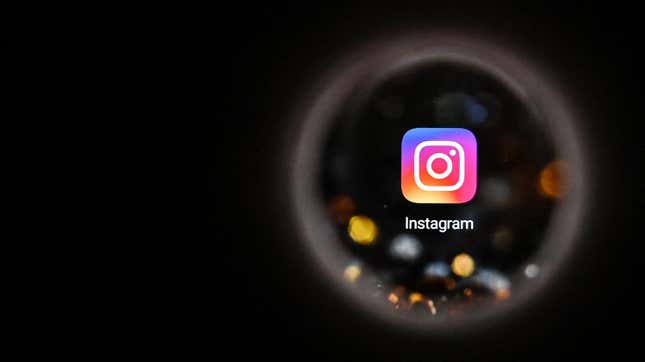
Instagram’s video selfie age verification system for teens went live this week in the United Kingdom, around six months after the the company began testing the tool.
The verification method, which uses AI identification tools from U.K. based technology firm Yoti, will apply to U.K. users who try to edit their date of birth from under 18 years of age to over 18 years of age. Users altering their date of birth can alternatively opt to submit a photo of a drivers license or other accepted ID in lieu of the selfie verification.
The tools are an attempt to assuage child safety advocates who have called on tech firms to do more to properly identify younger users on their site, but could simultaneously draw scrutiny from privacy advocates wary of Meta’s collecting of biometric identifiers.
Screenshots of the verification system obtained by the BBC show examples of the types of alerts teens users receive when they attempt to change their date of birth. The first notification asks the user to select between submitting an ID or taking a video selfie. The app says users who go the old fashioned ID route would have to wait up to two days to have their identity verified, while those taking a selfie can have results in 20 minutes. A separate image shows a user taking the video selfie to slowly turn their head to the right as a part of the verification process.
In a recent white paper, Yoti, the company partnering with Instagram, claimed it’s able to accurately identify users between the ages of 13-17 as being under 23 years old 99.65% of the time. The company says it accomplishes this by analyzing a user’s facial features—something they claim is distinct from more well known, and more controversial, facial recognition identification methods—to estimate a user’s age.
“This is not ‘facial recognition’ (where a computer system is trying to match a particular face against a database, to confirm that person’s identity),” Yoti writes in the paper. “It is simply detecting whether or not there is anything in the captured image that looks like a human face.”
Julie Dawson, Yoti’s Chief Policy and Regulatory Officer told Gizmodo proving age online is a “complex, industry wide challenge,” but believes their facial estimation tools strikes a balance between effectiveness and privacy.
“Our facial age estimation is a privacy-preserving solution,” Dawson said. “We built it to give everyone a secure way to prove their age without sharing their name or an ID document. The technology can allow minors to access content which is appropriate for their age.”
Tara Hopkins, Instagram’s Public Policy Director, meanwhile, said she believed the new tools were an “important step,” in protecting young users on their platform.
“We want everyone to experience Instagram in a way that’s appropriate for their age, which means we need to know how old they are—and this is a challenge across our industry,” Hopkins said.
Meta first revealed it was testing the new biometric driven identification method back in June. At the time, Meta said it hoped the tech could help, “make sure teens and adults are in the right experiences for their age groups.” That identification is critical because Instagram functions differently for different age cohorts. The company says accounts of users identified as being between the ages of 13-17 have their profiles private by default, and have limited exposures to certain types of advertisements.
Instagram explicitly prohibits children under the age of 13 from signing up on the service, even though third party research has shown younger users still do manage to make their way on the service frequently. Some estimates, like this 2021 report from Thorn, a non-profit committed to fighting child sexual abuse, estimates as many as 40% of children under the age of 13 use Instagram daily.
Documents released by Facebook Whistleblower Frances Haugen and included in The Facebook Papers repeatedly show internal Meta research highlighting the negative mental health impacts social media services like Facebook and Instagram have on young users. Though Meta has taken issue with claims its services are harmful to younger users, internal company surveys made public show teens regularly claim the platforms make them feel worse about their bodies and increase their rates of anxiety and depression.
The success or failure of Instagram’s selfie verification system in the U.K. could act as a bellwether for its potential expansion into other markets. In fact, that expansion is already partly underway. Last month, the company said it would roll out the program to overseas marketers in Brazil and India, which combined account for around 400 million daily active users, according to Sensor Tower data shared with TechCrunch.